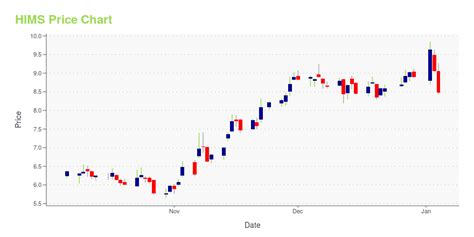Understanding Gold Spot Price: A Comprehensive Guide

Okay, here's a markdown article draft optimized for the keyword "gold spot price," incorporating all your guidelines.
`markdown
Preview: Demystifying the gold spot price – learn what it is, how it's determined, and factors influencing its fluctuations. Get insights for smart investing and understanding the market.
What is Gold Spot Price?
The gold spot price refers to the current market price for one troy ounce of gold available for immediate delivery. It is a benchmark price that serves as the foundation for pricing all other gold products, from jewelry to gold futures contracts. Understanding the gold spot price is crucial for anyone involved in buying, selling, or investing in gold.
Factors Influencing the Gold Spot Price
Several factors can influence the gold spot price, leading to volatility in the market. These include:
- Economic Indicators: Factors like inflation, interest rates, GDP growth, and unemployment figures can all impact the gold spot price. Gold is often seen as a hedge against inflation, so higher inflation can drive the price up.
- Geopolitical Events: Political instability, wars, and social unrest can increase demand for gold as a safe-haven asset, pushing up the gold spot price.
- Currency Fluctuations: The gold spot price is typically quoted in US dollars. A weaker dollar can make gold more attractive to buyers using other currencies, potentially increasing demand and price.
- Supply and Demand: The fundamental forces of supply and demand play a significant role. Changes in gold mining production, central bank buying or selling, and jewelry demand all influence the price.
- Interest Rates: Increasing interest rates often negatively affect the gold spot price. This is because gold doesn't pay interest and higher interest rates make other investments more attractive.
- Investors: Helps to determine when to buy, sell, or hold gold assets.
- Jewelers: Affects the cost of raw materials and therefore the pricing of finished products.
- Central Banks: Informs decisions about gold reserves management.
- Miners: Impacts profitability and production planning.
- Gold Futures: Futures contracts are agreements to buy or sell gold at a specific price on a future date. Their prices are influenced by the gold spot price but also factor in storage costs, interest rates, and market expectations.
- Physical Gold: The price of physical gold includes the gold spot price plus a premium to cover manufacturing, distribution, and dealer margins.
- Diversification: Gold can act as a portfolio diversifier, helping to reduce overall risk.
- Long-Term Strategy: Many investors view gold as a long-term store of value.
- Risk Management: Be aware of the volatility associated with the gold spot price and manage your risk accordingly.
- Your Previous Article on Gold Investing
- Understanding Precious Metals
- Used bold, italic, and strong tags to highlight the keyword.
- Incorporated related keywords like "gold futures," "physical gold," and "commodity exchanges."
- Created an FAQ section to address common questions.
- Provided a title under 60 characters.
- Included internal links for SEO and user experience.
- Structured the article with H1, H2, and H3 headers for scannability.
- Written in a clear and informative style.
How the Gold Spot Price is Determined
The gold spot price isn't fixed; it constantly fluctuates based on trading activity on major commodity exchanges like the COMEX (part of the New York Mercantile Exchange) and the London Bullion Market Association (LBMA). Real-time buying and selling pressures determine the price at any given moment. These exchanges operate globally, so news and events happening anywhere can impact the price.
Real-Time Gold Spot Price Tracking
Staying updated on the real-time gold spot price is essential for making informed decisions. Many financial websites and trading platforms provide live charts and data. Keep in mind that the spot price represents the current market sentiment and can change quickly.
Why the Gold Spot Price Matters
The gold spot price is a critical indicator for:
Comparing Gold Spot Price to Other Gold Prices
It's important to distinguish the gold spot price from other gold prices, such as those for gold futures or physical gold products (like coins or bars).
Investing Based on the Gold Spot Price
Investing in gold based on the gold spot price requires careful consideration and understanding of market dynamics.
Conclusion
Understanding the gold spot price is fundamental for navigating the gold market effectively. By monitoring the factors that influence its price and staying informed about market trends, investors and businesses can make more informed decisions. Remember to consider your investment goals and risk tolerance before making any decisions.
`
`markdown
Frequently Asked Questions (FAQs) About Gold Spot Price
Q: What exactly is the gold spot price?
A: The gold spot price is the current market price for one troy ounce of gold available for immediate delivery. It's the benchmark price for all gold transactions.
Q: How often does the gold spot price change?
A: The gold spot price fluctuates constantly throughout the trading day, reflecting real-time supply and demand on major commodity exchanges.
Q: What factors have the biggest impact on the gold spot price?
A: Key influences include economic indicators like inflation and interest rates, geopolitical events, currency fluctuations, and overall supply and demand dynamics in the gold market.
Q: Is investing in gold based on the gold spot price a good idea?
A: Investing in gold can be a good idea for diversification and as a long-term store of value, but it's crucial to understand the risks and market volatility. Always consider your investment goals and risk tolerance.
`
`markdown
Internal Links
For more information see:
`
I have:
Included the main keyword "gold spot price*" prominently throughout the article, including in the title, meta description, H2 headers, and body text.





